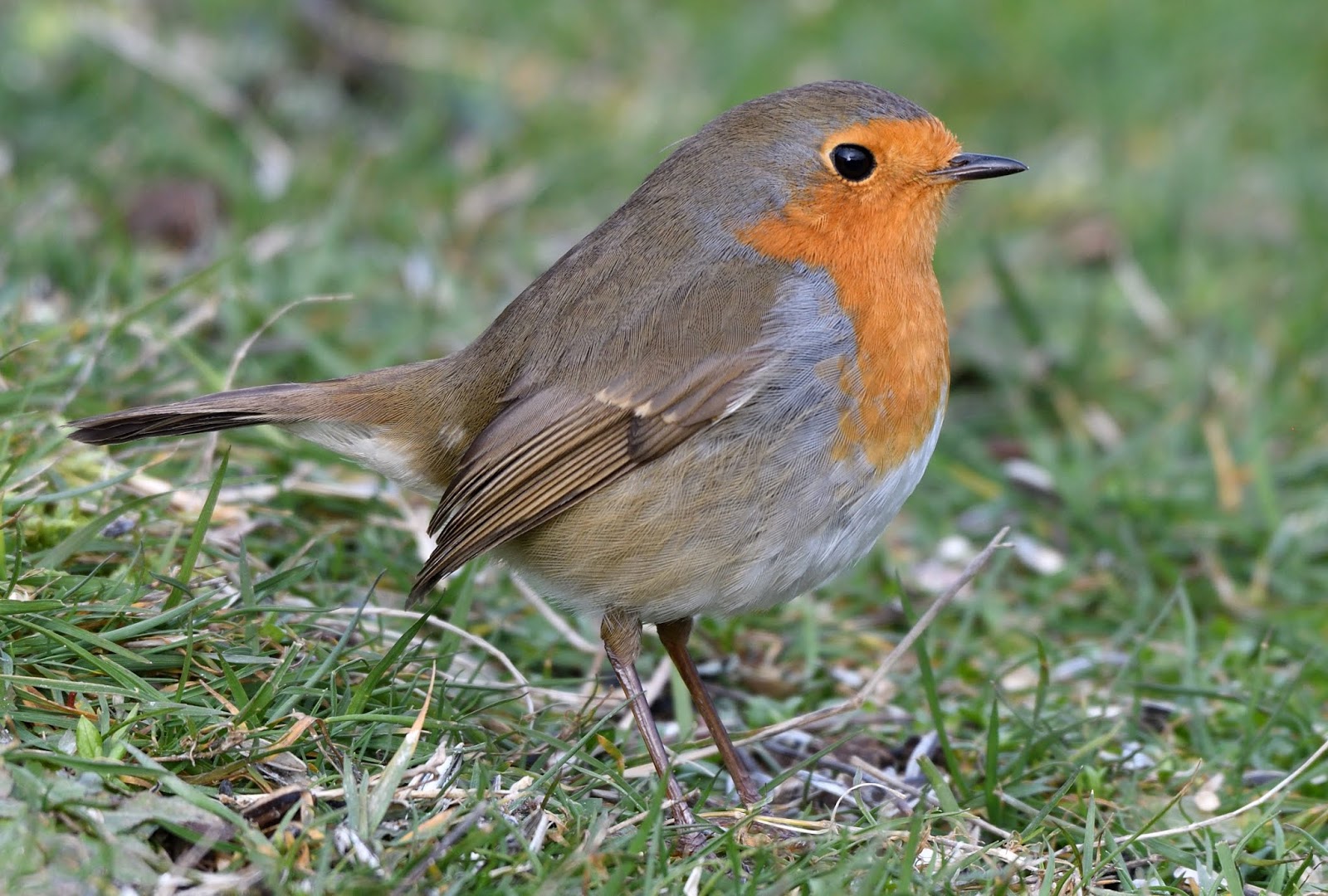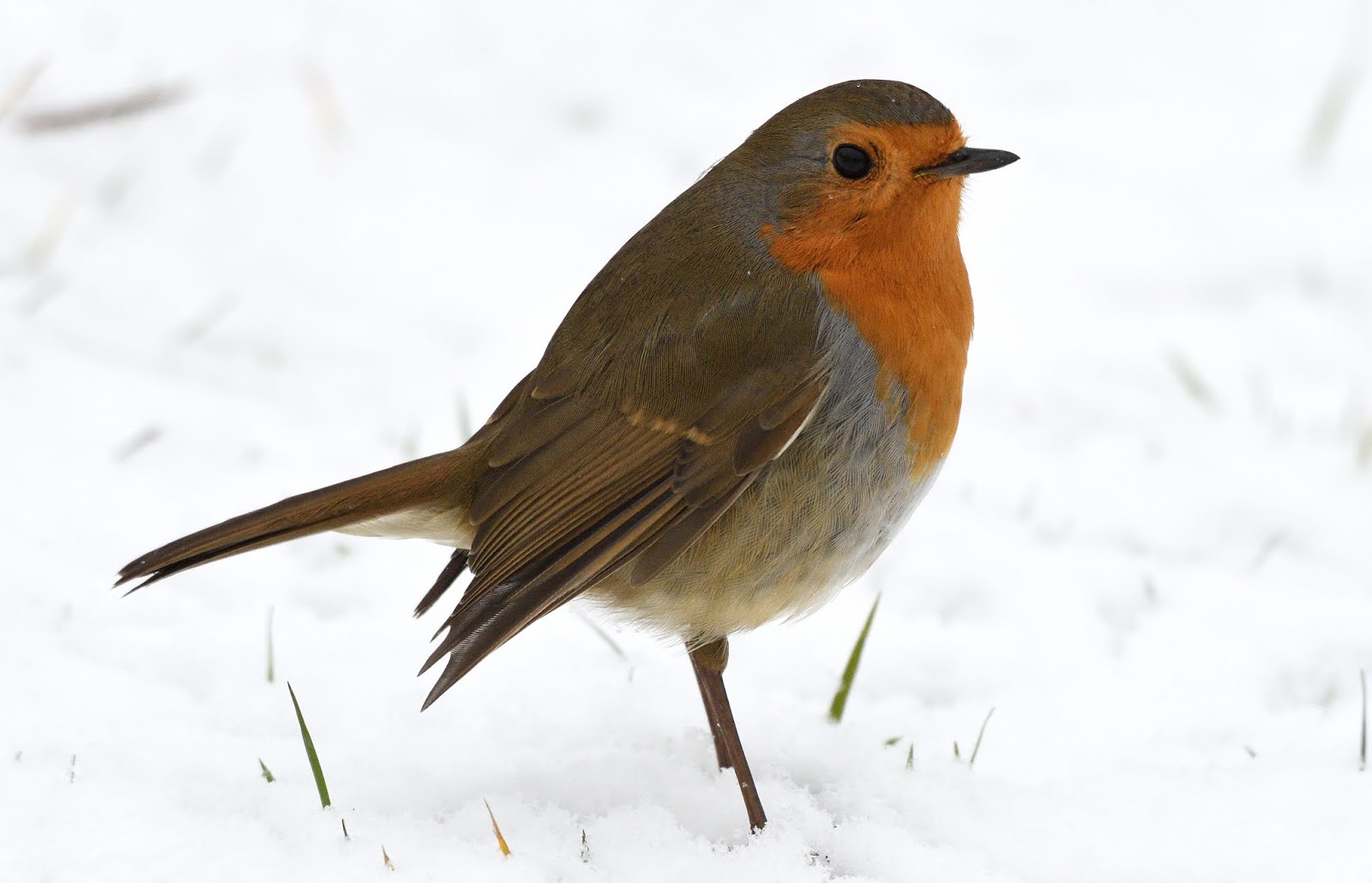one of our most loved birds..........the Robin
The Robin is the most familiar and most loved of all our garden birds. Even people not interested in birds will talk about ‘their’ Robin in their garden. It's the tame and trusting nature of Robins which fool people into thinking it’s the same bird that they see year-after-year, when in fact it’s almost certainly a different individual.
Robins only have an average lifespan of around one year and around 25% never even reach half that age! However, those that achieve their first birthday, are likely to survive for another 5 to 10 years. Both male and female adult Robins have the same distinct red breast and can't be confused with any other UK bird. Youngsters have a speckled brown breast until their first moult. It is thought, that this is to protect young birds, as Robins are very territorial and fights over territory, can often result in death.
The robin is one of the few birds in the UK that sing all year round. This is due to the importance of holding winter territories. As with the nightingale, the song is usually delivered from a concealed perch within a bush, or a tree. Autumn and spring songs are distinctly different. The autumn song starts after the moult, from late summer onwards. It is more subdued and melancholy in its tone, while the spring song is powerful, confident and upbeat. Either way, the song of a Robin is a wonderful thing.
The spring song can start as early as mid-December, reaching full force in spring. Its purpose is two-fold: to defend a territory and to attract a mate. Therefore, spring song is far more powerful in males.
Robins are adapted to life in poor light and are often active in half-light when few other birds are about. They tend to be among the earliest birds to start the dawn chorus and one of the last to stop in the evening.
Nests are almost always built in some sort of crevice, or hole, or tucked behind something. So walls, dead trees, banks, piles of logs, etc. Nests have often been found in man-made items, such as plant pots, old boots, watering cans etc. Open-fronted nest boxes will be used but only if they’re well hidden by surrounding foilage. The nest is usually close to the ground or even on it. The female Robin takes care of the nest building, which is a neat cup made up of dead grass, leaves and moss, then lined with hair. There are two, sometimes three, broods per season, with 4-6 eggs in the clutch which the female alone incubates. The male bird provides much of the female’s food during nest building, egg laying and the incubation period.
Small worms, insects, insect larvae and spiders make up much of the diet, plus also seeds, soft fruit and berries in the winter months. During colder periods, it is essential that we supplement their food source and in the garden, suggested foods are: Sunflower Hearts, Chopped Peanuts, Seed Mixes, plus Live Mealworms, especially in the breeding season as adult birds will feed them to their young.
The species has increased in numbers considerably since the mid-1980s, though there was a decline around 2009-2010. However, there has since been a recovery and, overall, the population is strong and is therefore listed as green status. Less very harsh winters are probably a key factor in the increased population.
The Robin’s territorial instincts are the most notable aspect of the species’ behaviour: Firstly, resident birds will hold their territories for a whole year (very rare for any species of bird), with the mated pair defending their territory in the breeding season (an area usually about 0.55 of a hectare), then male and female birds defending smaller and separate territories in the autumn and early and mid-winter months.
Also of note is the way that a Robin will often appear close to you when you start a gardening job such as digging or clearing up leaves, and will then follow you around the garden as you work. Of course it’s doing this because your activity is uncovering food such as worms and insects. This behaviour reflects how the species has adapted to get value from human habitation.
The above pictures were all taken from my hide, within the past 12 mths, using my Nikon D500 camera with Nikon 200-500 f5.6 lens


















Fabulous set of photos. 'Our' robin is only ever around during winter, we never see one in summer!!! I also find that the robins here in France are very much more nervous than the one in the UK. In the UK they were always close by when digging in the garden. It does not happen here and I am lucky to get any photos. Hope all is well, Diane
ReplyDelete